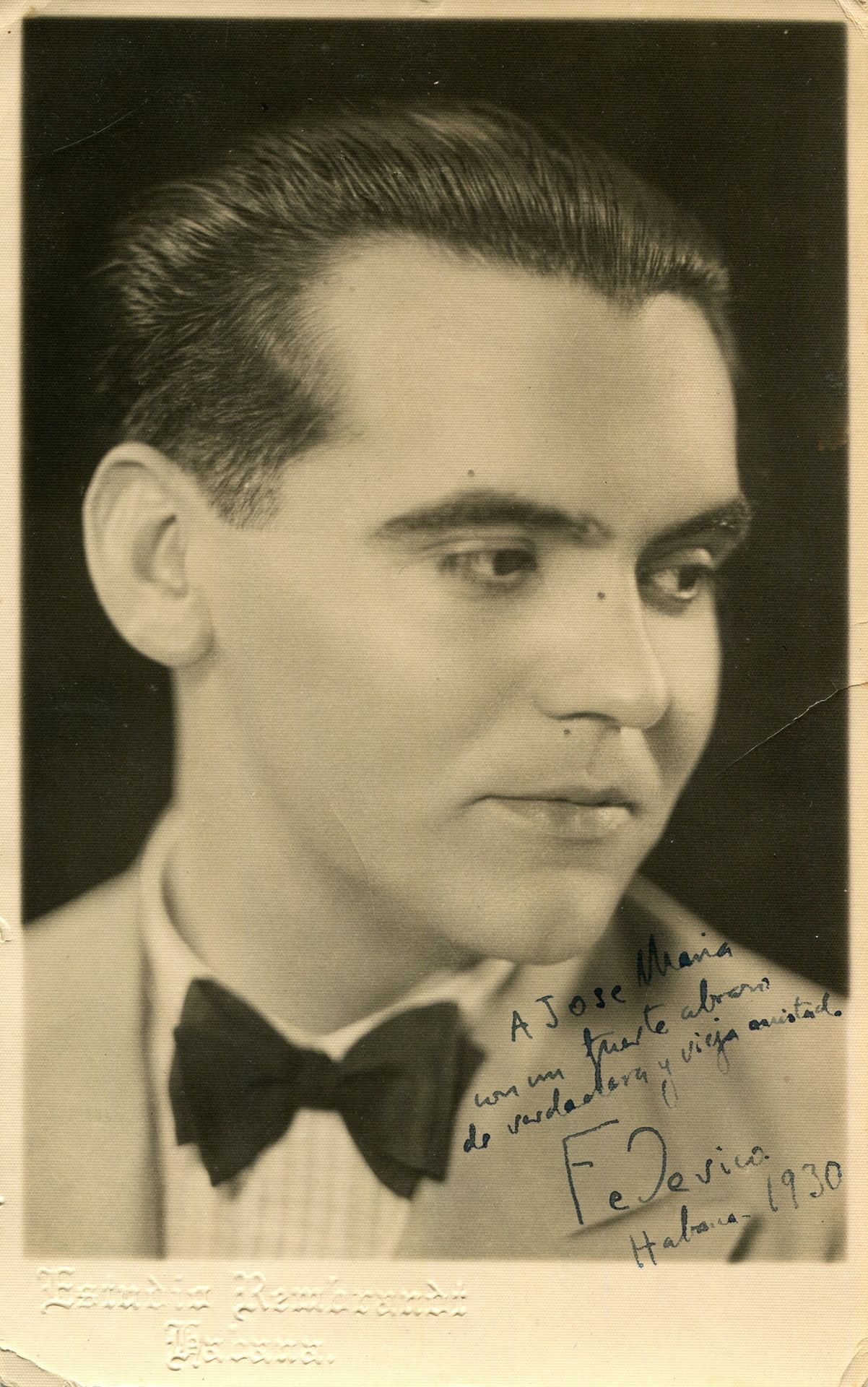Description
GARCIA LORCA FEDERICO: (1898-1936) Spanish Poet & Dramatist. An iconic figure of the Spanish literature. An extremely rare signed and inscribed 4 x 7 photograph (10.5 x 17.5 cm), the Estudio Rembrandt photograph from Habana showing Lorca in a head and shoulders close-up portrait pose, wearing his bow tie. Signed and inscribed in bold blue fountain pen ink to the bottom right corner `A Jose maria, con un fuerte abrazo de verdadera y vieja amistad´ (''To Jose Maria, with a strong hug of true and old friendship'') Bearing to the lower white border the photographer´s studio blind embossed monogram. Autographs of the Spanish Poet are extremely rare in any form following his murder, at the age of 38, by fascist forces during the Spanish Civil War. His remains have never been found. Small overall minor creasing, with very small corner creases, otherwise G
989
GARCIA LORCA FEDERICO: (1898-1936) Spanish Poet & Dramatist. An iconic figure of the Spanish literature. An extremely rare signed and inscribed 4 x 7 photograph (10.5 x 17.5 cm), the Estudio Rembrandt photograph from Habana showing Lorca in a head and shoulders close-up portrait pose, wearing his bow tie. Signed and inscribed in bold blue fountain pen ink to the bottom right corner `A Jose maria, con un fuerte abrazo de verdadera y vieja amistad´ (''To Jose Maria, with a strong hug of true and old friendship'') Bearing to the lower white border the photographer´s studio blind embossed monogram. Autographs of the Spanish Poet are extremely rare in any form following his murder, at the age of 38, by fascist forces during the Spanish Civil War. His remains have never been found. Small overall minor creasing, with very small corner creases, otherwise G
You may also like
